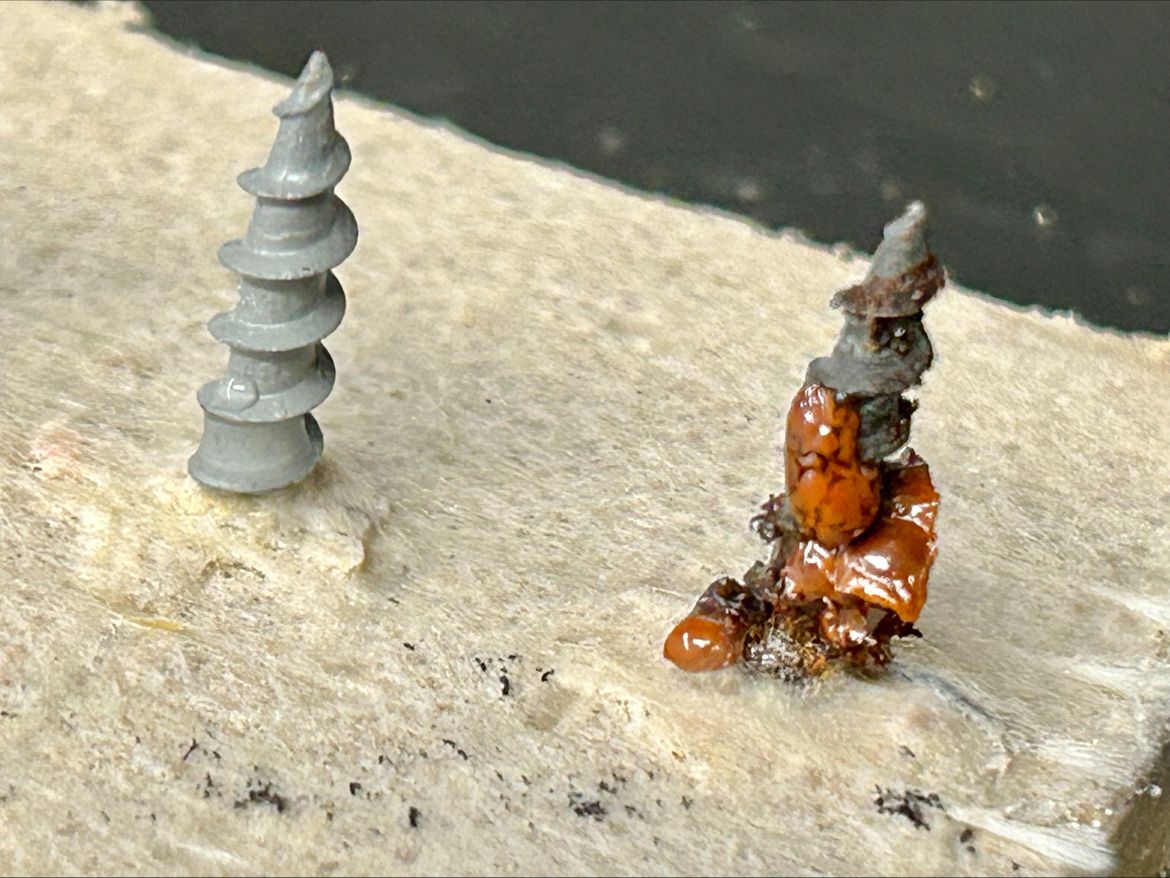Tags: #architecture #buildingdesign #buildingenclosures #buildingenvelopes #buildingmaterials #buildingproducts #buildingscience #corrosion #fasteners #materialsscience #mgo #roguetesting

MgO and fasteners: what minimum fastener coating offers effective solutions?
This question seems to be at the center of MgO acceptance across the industry and throughout the world. The easy answer, “it depends”, is no answer at all. Factors such as application and board quality (chemical stability) obviously play important roles. But we can move beyond board variability as criteria for corrosion resistance are further refined and embraced.
Here, I show two fasteners maintained at >90% RH for almost two years. One, an exterior epoxy-coated fastener, the other an interior drywall screw with its standard black phosphate coating. Clearly the latter offers no protection whereas the former shows promise as a cost-effective solution. I’ve seen similar resistance for various zinc-coated fasteners. But again, it starts with the board, its chemistry, it’s application, and even the board’s coating.
Another important factor is abrasion resistance – a key consideration for cladding fasteners – one that deserves its own means for evaluation. I’m busy with this and many other initiatives as I hit the ground running in our new test facility here in North Carolina.